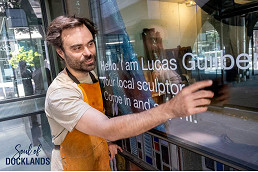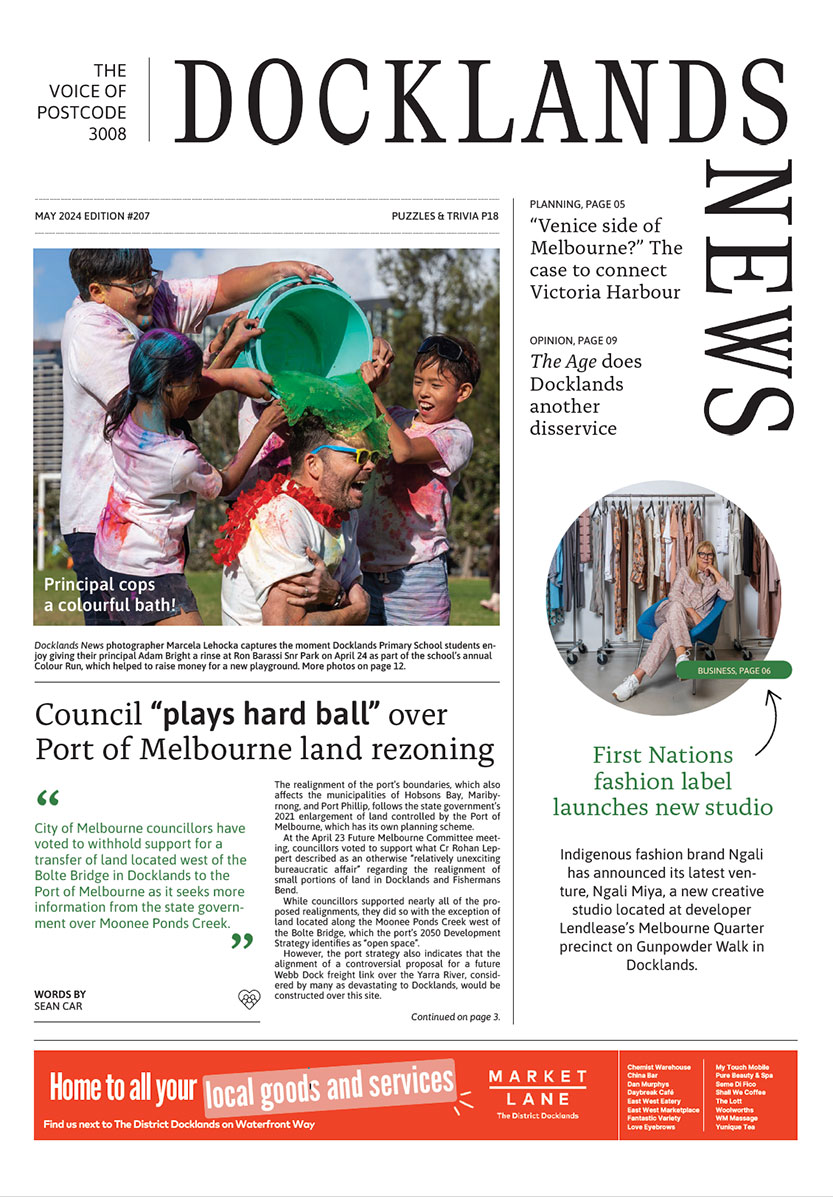Docklands’ black hole for building plans
By Sean Car
An historical administrative bungle between government agencies means that original building plans for any number of Docklands buildings may have either been “lost” or can’t be accessed, according to the City of Melbourne.
And following enquiries by Docklands News to the council, Development Victoria and the Victorian Building Authority (VBA), it appears that no one has any clear answers as to how this bungle has occurred or how widespread the issue is.
The discovery was made last month when professional facilities manager John Dall’Amico, whose company has recently taken over management of Waterfront City (west building) at 439-441 Docklands Drive, requested the building’s plans from council.
Having paid a standard search fee, Mr Dall’Amico was only later issued with a handful of drawings, as well as an explanation from a council administration officer which Mr Dall’Amico described as “beyond comprehension”.
“The files have arrived from archives and unfortunately detailed plans aren’t included,” the council officer wrote.
“Docklands is a problematic area when it comes to our records as the applications were originally held by the VBA and Development Victoria (DV) prior to being transferred to the City of Melbourne’s records.”
“Some applications may never have been lodged for record keeping and others may have been lost in the process of transferring the records from one organisation to the other.”
The response from the council has begged a number of questions. Firstly, when was the issue first discovered? And, secondly, what measures have been taken to fix the problem?
The original Docklands Authority, then VicUrban (later Places Victoria and now DV) formally transferred Docklands into the City of Melbourne municipality in 2007. It is during this period that the council offer said a number of buildings plans were “lost” to the point of being “problematic” in Docklands. How many other buildings in Docklands are affected?
Waterfront City was completed around 2004 and Mr Dall’Amico told Docklands News that he wondered how he could have been the first one to raise the issue.
“That just seems ridiculous,” he said.
From fire extinguishers and security cameras
to utilities and floor plans, the bungle means that Mr Dall’Amico has next to no understanding as to how to best manage the building.
“It’s massive. I come in and we don’t even know how to get to the electrical system. We don’t even know where the gas is running in the building. The hydraulics. Nothing.”
“The cost to get someone to discover all of this would be quite a lot.”
Docklands News followed up with the City of Melbourne in an effort to shed light on the situation.
“In some instances, it has not been possible to access records originally held by the state government before records were transferred to the City of Melbourne when council became the authority for Docklands in July 2007,” a council spokesperson said.
“In cases where applications were not transferred to the City of Melbourne, we work with the Victoria Building Authority, Development Victoria, and the applicant to find a solution.”
“We understand that this situation is frustrating for ratepayers and we will refund the search fee for the customer affected.”
But where are the buildings plans? And what “solutions” are sought to reverse-engineer a building? These are questions that remain unanswered.
According to DV (originally Docklands Authority), it was never responsible for managing building certifications in Docklands, but rather only facilitated planning approvals and permits. That responsibility, it claimed, rested with the VBA, which was then known as the Building Commission.
But a spokesperson for the VBA said: “The VBA collects information on reported building activity. The VBA does not hold copies of original documents.’’
So, who was responsible? According to the original CEO of the Docklands Authority, John Tabbart, it was his belief that City of Melbourne had always played a role in building permits in Docklands.
Mr Tabbart said he believed that the City of Melbourne always managed building permits, even before municipal operations were transferred to the council in 2007.
This was a view supported by others who previously worked for VicUrban, whom Docklands News sought for clarification.
While it is a local council’s responsibility to file buildings plans, it is still not clear as to what measures, if any, the City of Melbourne has taken to rectify this administrative black hole in Docklands over the past 12 years.
John Dall’Amico, who manages a number of buildings throughout the CBD, said that the system seems to have failed Docklands.
“The system works, it’s there, but it sounds like for Docklands something bizarre has happened. I don’t know how you describe it. I don’t know that it would be good in any circumstance,” Mr Dall’Amico said.

Council “plays hard ball” over Port of Melbourne land rezoning







 Download the Latest Edition
Download the Latest Edition
